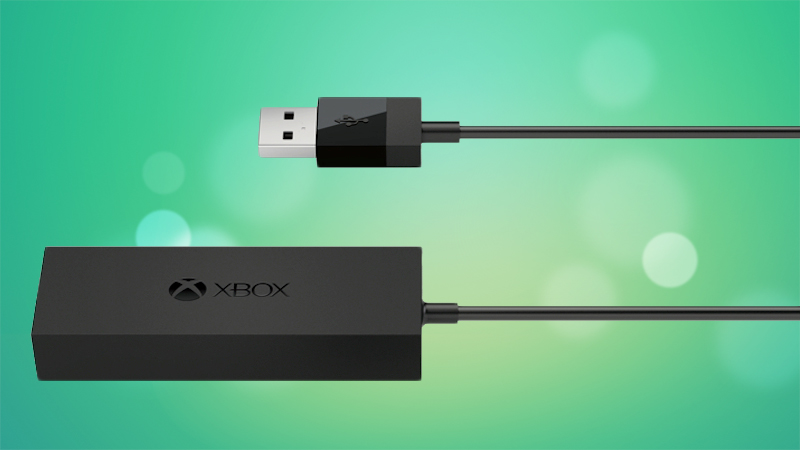TechRadar Verdict
Don't be distracted by the Xbox One Digital TV Tuner's small size and affordable price; it works well and more importantly represents a significant moment in the Xbox One's development, at least where the UK is concerned.
Pros
- +
Surprisingly cheap
- +
Second screen viewing support
- +
Picture quality is good
- +
Set up is simple
Cons
- -
Voice controls are patchy
- -
Only has one tuner
- -
Can't record via EPG
- -
No Android 2nd screen
Why you can trust TechRadar
From its inception, the Xbox One has been envisaged by Microsoft as much more than just a games console.
Rather it's been developed and positioned as a full home entertainment centre – a hub through which all your home entertainment content should pass.
This vision hasn't always parsed well with the gaming community; certainly Sony did very nicely with its PS4 marketing policy of focussing on that console's single-minded interest in gaming.
It hardly helped, either, that Microsoft dropped the ball by failing to deliver some key AV-related features when the Xbox One was launched. Europe fared particularly badly in this respect, as we didn't get any support for integrated TV functionality like the American market did.
Thankfully things have slowly but surely been heading in the right direction since then. Various firmware updates have introduced such key AV tricks as 50Hz/3D Blu-ray playback, Plex multimedia support, Sky's Now TV service and the Xbox One Guide, which enabled the Xbox One to connect up with Sky and Virgin Media receivers to deliver enhanced listings and control options.
Of course, though, not everyone is a Sky or Virgin subscriber. Nor is having to coordinate with an external receiver an especially user-friendly or integrated TV solution.
So, on paper at least, the arrival of the Xbox One Digital TV Tuner comes as a very welcome addition to the Xbox One's skill set, finally bringing a more integrated TV solution for the UK that the vast majority of British households can make use of. All you need is Freeview reception, and it's game on.
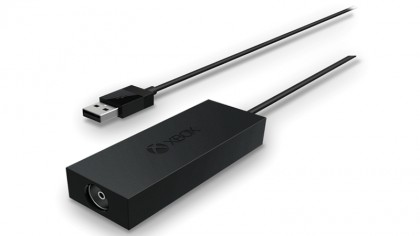
Considering how potentially important it is in the Xbox One's evolution, the Digital TV Tuner is a pretty unassuming looking little thing.
It's essentially just a small black rectangle with a coax input at one end and a USB line at the other. You plug your aerial lead into the coax input and you plug the USB into one of the USB sockets on your Xbox One's rear.
As soon as you do this the Xbox One detects the tuner's presence, and asks you if you want to instigate the device's installation process.
This process is simplicity itself. First you're asked if you're connecting the tuner to an antenna or cable source, then you're asked for your postcode (though handily the console auto fills this if it already knows your postcode from other applications) so the tuner/console can deliver the right digital channels for your area.
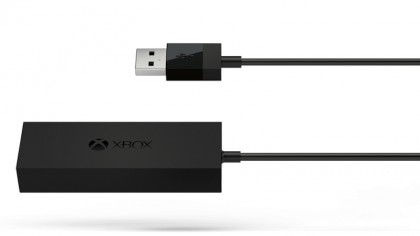
Next up you're asked to confirm your service provider is Freeview, and if your postcode puts you in a 'borderline' area you may also be asked to confirm your preferred Freeview area.
The console auto-tunes after that – a process which didn't take long during our tests and yielded a full roster of Freeview channels, including HD ones.
You might expect this to be the end of the installation procedure, but there are a couple more useful tricks it wants to make you aware of. First, you're asked if you want to activate Pause Live TV, whereby the console lets you pause, rewind and fast forward through up to 30 minutes of whatever you're watching. Please note that this feature requires 4GB of free HDD space.
If you've got an Xbox Kinect sensor you're given the option to have the console automatically turn your TV on when you switch your console on, using the 'Xbox On' command.
Last but not least, you get the option to decide whether the Xbox One goes straight to the TV app when you switch it on, or goes to its normal home menu screen.
Having got the Digital TV Tuner installed, though, the next job is to look for features to justify watching TV through your Xbox One, rather than just watching it through your TV's tuner.
The main point is that it lets you watch TV while having easy access to the One Guide system, and the various 'value added' features that provides. We won't go through all of these in detail again since we covered them in depth in the Xbox One review. But it's worth quickly covering the highlights.
For starters, if you press the Xbox's view button you get a quick bit of info and nice high-res graphic of the programme you're watching. This comes with the option to scroll up and down the Freeview channel list to see info on all the other programmes currently being shown.
You can also move left to see a list of recent channels you've watched, or you can access more detailed information on the programme being shown. You can rate programmes as you watch them, and on the 'more information' screen you can also see alternate show times/formats (for instance, if an HD version is available) for what you're watching.
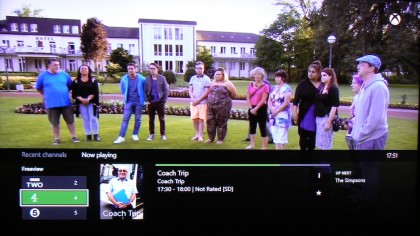
Hit the menu button while watching TV and you can open the full One Guide enhanced programme listings. This is prettily presented and easy to follow and navigate; can be easily 'filtered' to show only favourite channels; and lets you access 'app channels', providing access to on-demand streamed content from the likes of Twitch, Xbox Video, Amazon Instant Video, BlinkBox, Wuaki.tv, EuroSport and YouTube.
One new feature due to be implemented soon is a 'trending' system that lets you see what the Xbox One community is watching or Tweeting about.
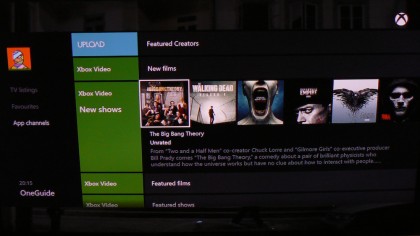
Another 'flagship' feature enables Xbox One users with an Xbox Kinect to channel surf simply by speaking to their consoles. For instance, you can just say "Xbox Watch Sky News" and your console will switch to the right channel. Or that's the theory, at least… We'll come back to this in the usability section later on.
One further great feature of the Xbox One's Digital Tuner implementation is that it allows for second-screen viewing via the console's Smart Glass app. In other words, you can watch what's playing on the console's tuner on your smartphone or tablet.
Unless, bizarrely, that phone or tablet runs on Android, as currently only iOS and Windows devices are supported. Presumably Android video streaming support is coming soon given that even a number of Smart TVs support this feature now.
Having made one not entirely favourable comparison between the Xbox One's TV integration and the best Smart TVs, I may as well make a couple of others. For instance, unlike most Smart TVs, which let you record TV to USB HDD, you can't record from the Xbox One tuner beyond the thirty minute pause live TV function.
Also, since the Digital TV Tuner only provides a single tuner, you can't watch one programme on TV while another family member watches a different one on a tablet or phone. A number of smart TVs this year have shipped with two – or more – tuners to support multi-content multi-screen viewing.
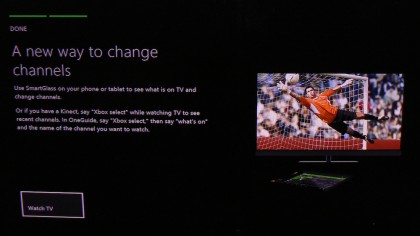
Some brands have even offered a degree of voice control for their TV features too. But none of these systems (even the relatively advanced one from Samsung) has really blown us away.
On the other hand, as well as not providing access to the One Guide, smart TVs also don't let you incorporate TV into a true multi-tasking environment where you could, say, be playing a game in the main window while keeping TV running in a 'snap' window to the side.
John has been writing about home entertainment technology for more than two decades - an especially impressive feat considering he still claims to only be 35 years old (yeah, right). In that time he’s reviewed hundreds if not thousands of TVs, projectors and speakers, and spent frankly far too long sitting by himself in a dark room.
